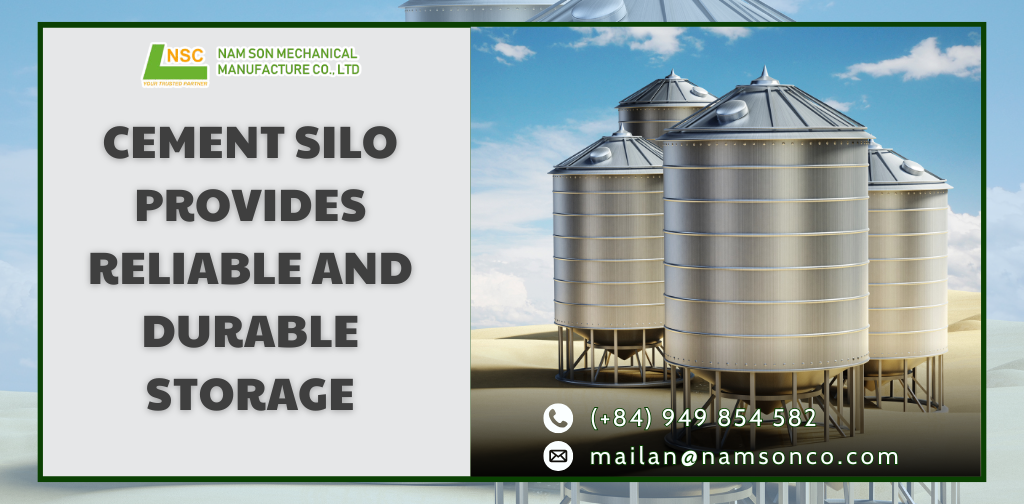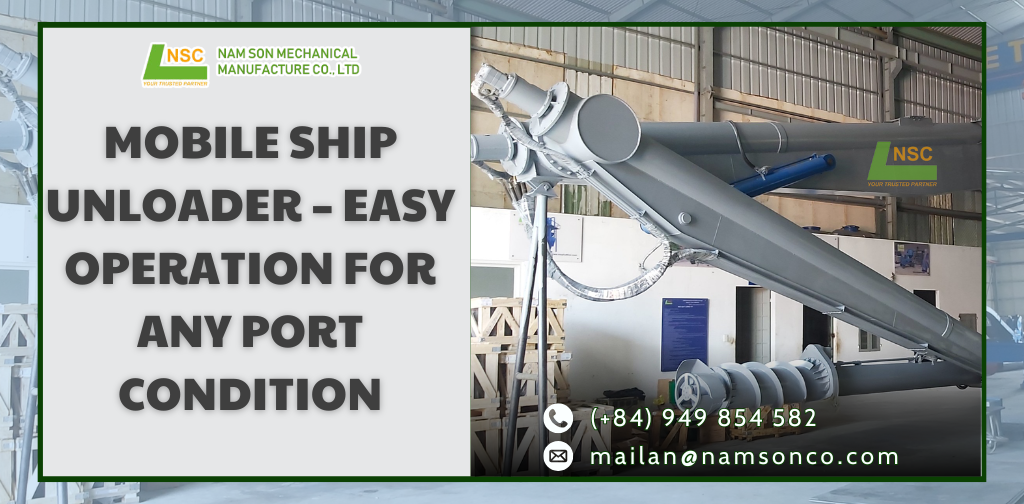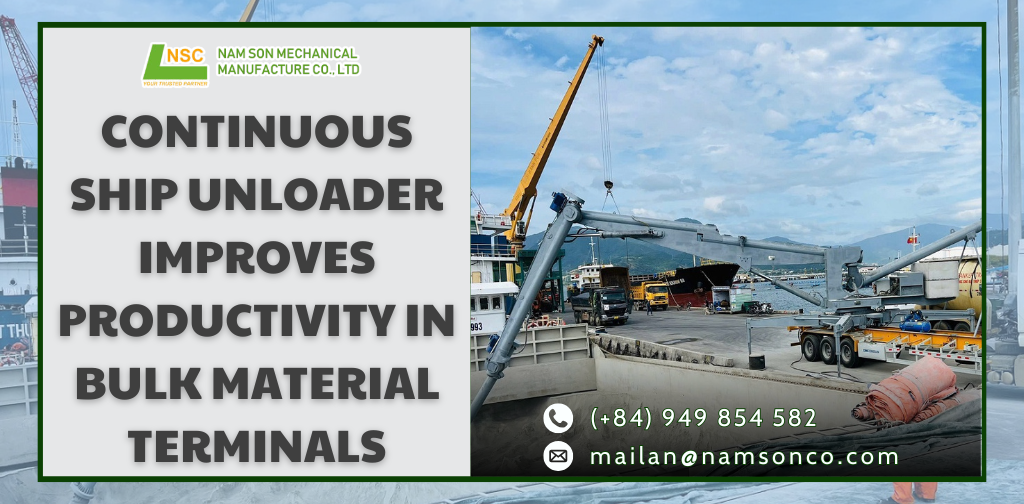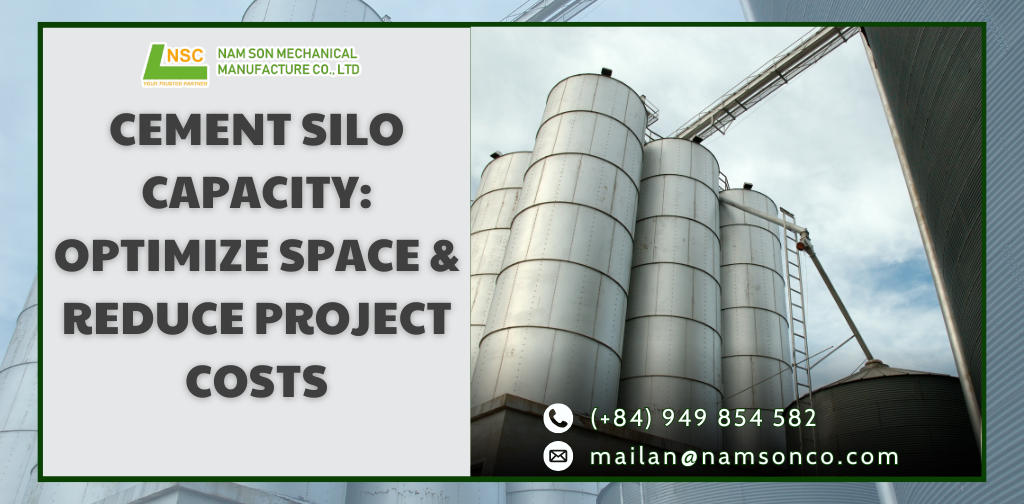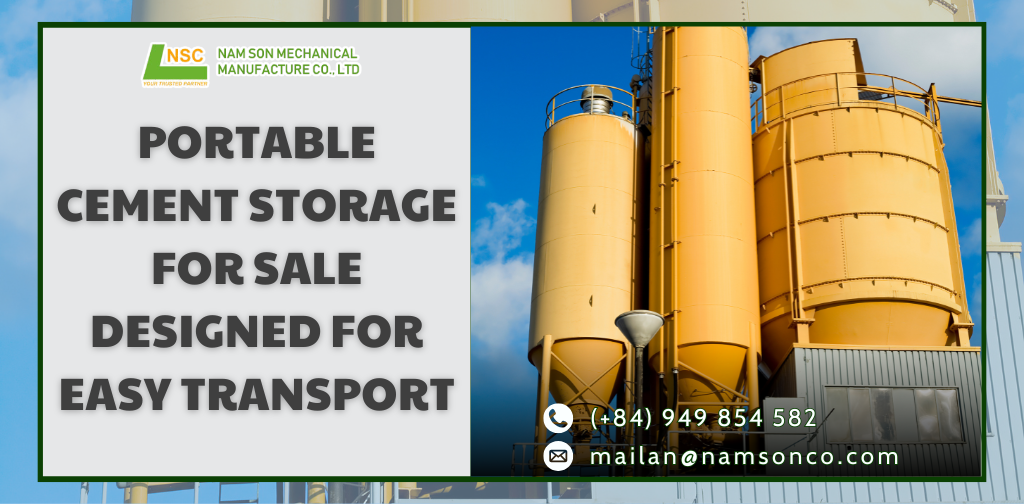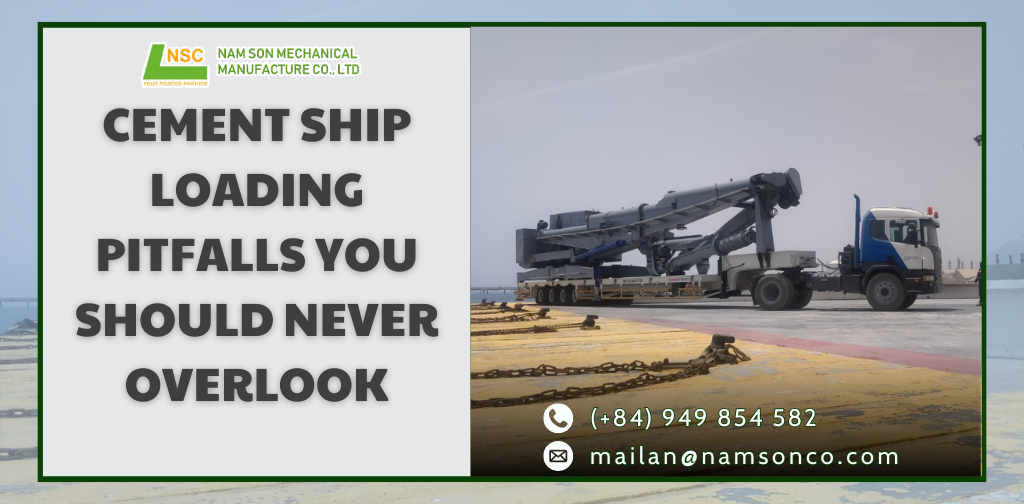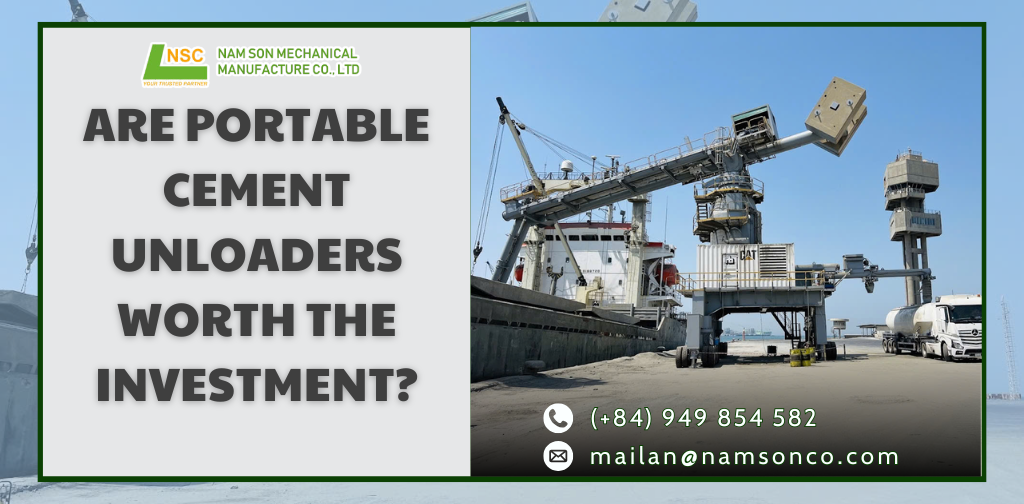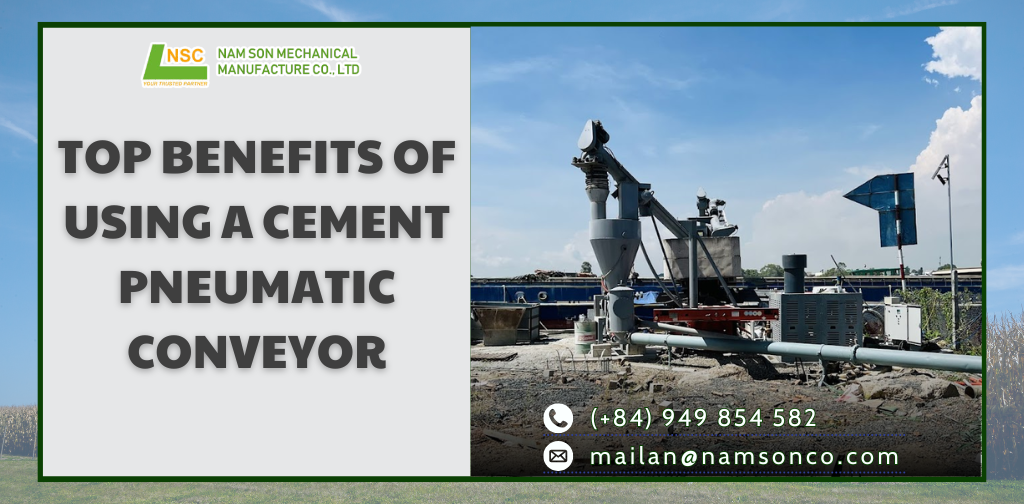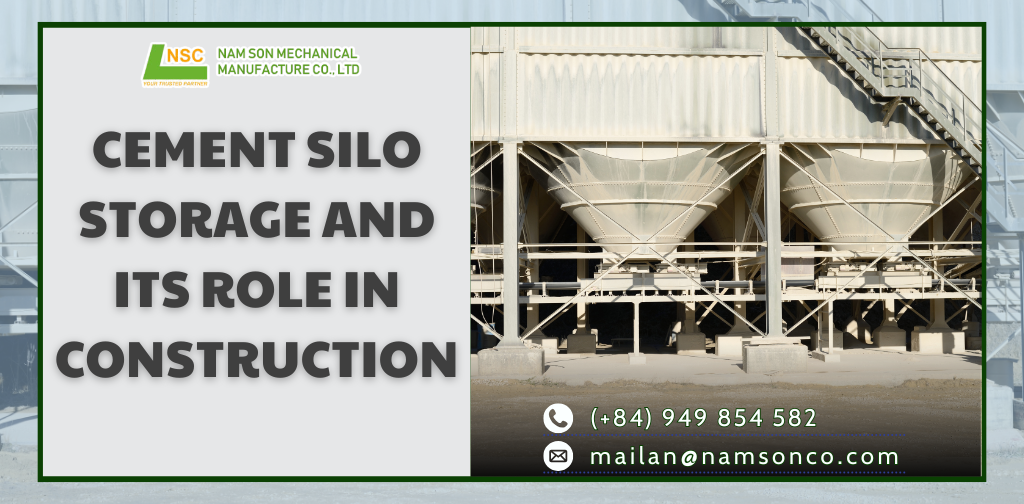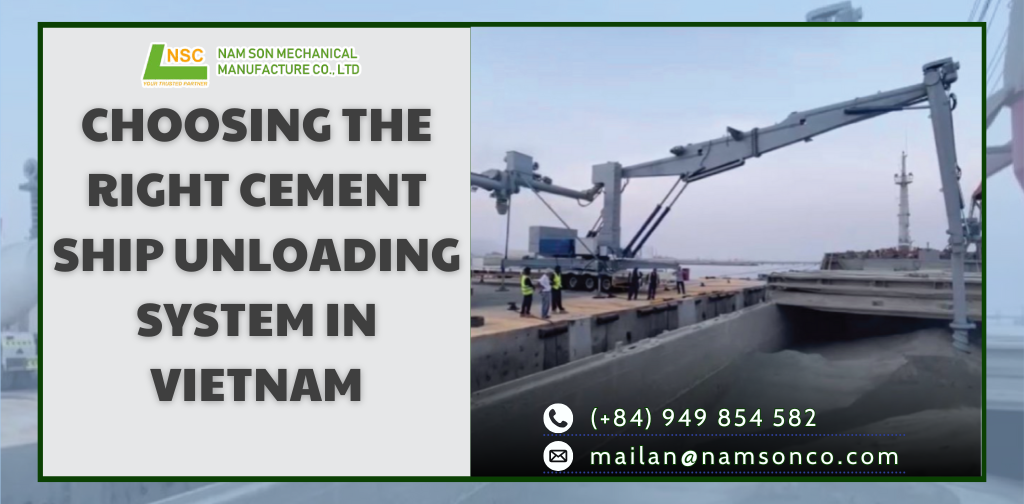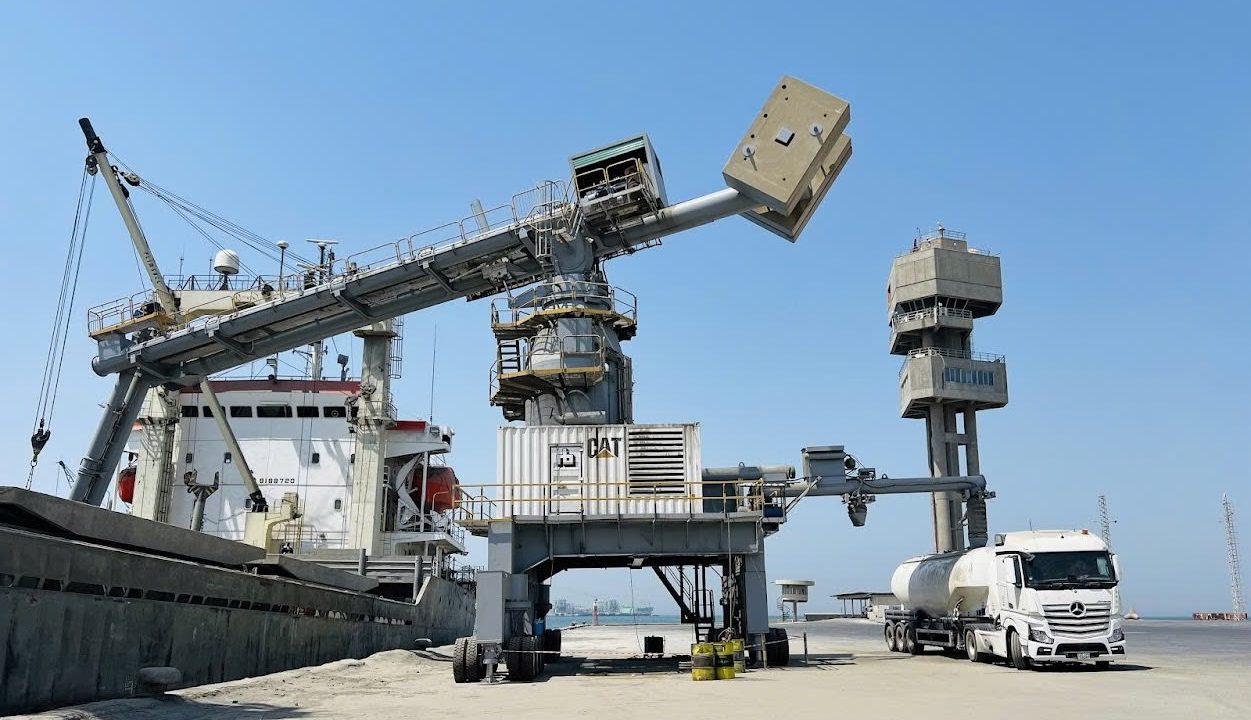Vietnam’s cement industry is growing rapidly, and efficient port operations are more important than ever. The Vietnam cement ship unloader delivers unmatched speed, cost savings, and dust-free performance, making it a vital solution for bulk cement handling at both import and export terminals.
Introduction
In recent years, the Vietnam cement ship unloader has become a vital component of modern bulk cement handling operations at the country’s ports. Vietnam is one of the largest cement producers and exporters in Southeast Asia, with an annual output exceeding 100 million tons. This production growth has increased the need for efficient, cost-effective, and environmentally friendly cement unloading equipment.
These systems are designed to transfer cement directly from bulk vessels to storage facilities, such as cement silos or trucks, ensuring fast cement discharge while minimizing dust emissions and material loss. Compared to traditional grab crane unloading methods, modern bulk cement unloaders in Vietnam offer significant operational advantages that are transforming the country’s cement supply chain.
=>SEE MORE: Are portable cement unloaders worth the investment?
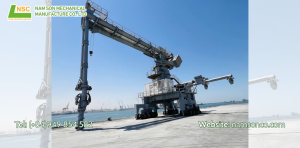
Advantages of Vietnam cement ship unloaders
1. High efficiency & faster discharge rates
One of the primary benefits of a cement ship unloader in Vietnam is its ability to significantly speed up the unloading process.
A conventional grab crane might handle 300 – 500 tons of cement per hour, while advanced pneumatic cement ship unloaders and mechanical cement ship unloaders can achieve rates of 800 – 1,200 tons per hour for continuous operation.
Some advanced models, such as the continuous operation cement unloader, can even reach 1,500 tons per hour, making them ideal for high-capacity cement ship unloading at major ports like Hai Phong and Cai Mep.
This efficiency directly translates into reduced demurrage costs, shorter ship berthing times, and higher port throughput.
2. Cost-effective & energy-saving operations
Modern Vietnam cement ship unloaders are engineered with cost control in mind.
Instead of relying on multiple pieces of equipment and high labor input, a cement conveyor ship unloader can integrate several functions into one automated process.
By adopting cost-effective cement unloading technology, companies can save on:
- Labor expenses, as fewer operators are needed.
- Fuel and electricity costs, due to energy-saving cement unloader designs with variable speed drives.
- Equipment wear, thanks to optimized material flow paths.
For example, a medium-sized port in central Vietnam reported a 15% reduction in operational costs after switching from grab cranes to a mobile cement ship unloader.
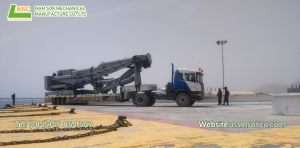
3. Environmentally friendly & dust-free technology
Environmental protection is increasingly important, especially for ports located near residential areas.
The latest dust control cement unloader models in Vietnam feature:
- Fully enclosed pipelines for dust-free cement unloading.
- High-efficiency filters that capture airborne particles.
- Noise-reducing designs for urban port operations.
By adopting an eco-friendly cement unloader, ports can not only meet local environmental regulations but also reduce product loss by up to 0.5% per shipment.
This ensures cleaner working conditions, protects workers’ health, and enhances the reputation of the operator in the global market.
4. Low maintenance & long-term reliability
Downtime in port operations can be costly. That’s why many operators invest in low-maintenance cement unloader designs built from corrosion-resistant steel and fitted with wear-resistant linings.
Automated condition monitoring systems alert maintenance teams before issues become critical, ensuring a durable cement handling system that can operate 24/7 with minimal interruptions.
In real-world use, some mechanical cement ship unloaders in Vietnam have operated for over 20 years with only periodic upgrades to control systems.
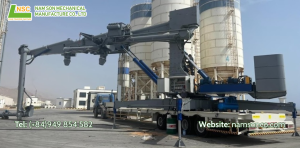
Practical applications in Vietnam’s cement industry
1. Cement import & export at ports
Vietnam’s cement industry exports to more than 50 countries, including China, the Philippines, and Bangladesh.
At export terminals, bulk cement unloaders help load and discharge cement quickly, supporting large-scale shipping schedules.
Similarly, cement import operations use these systems to unload specialized cement carriers for domestic distribution.
In cement maritime transport between northern and southern Vietnam, ship unloaders ensure quick transfer from vessel to land-based storage, maintaining product quality.
2. Bulk cargo handling & port operations
Major ports like Hai Phong, Cai Mep, and Đa Nang handle millions of tons of bulk materials annually, with cement being a significant portion.
The bulk cement unloader is indispensable in these environments, enabling faster ship turnaround and reducing bottlenecks.
Rail-mounted port ship unloaders are ideal for fixed jetty setups, while mobile cement ship unloaders can serve multiple berths, increasing operational flexibility.
In cement jetty unloading, these machines can work in all weather conditions, ensuring an uninterrupted supply.
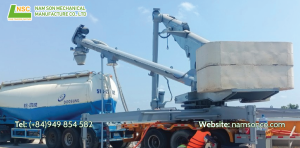
3. Integration with storage & transfer systems
Efficiency in cement handling is maximized when the unloader is directly connected to cement silo loading from ship systems.
This eliminates intermediate transport steps, reduces handling costs, and minimizes contamination risks.
Advanced cement transfer systems integrate weigh scales, dust suppression units, and automated routing to different silos, ensuring a smooth cement handling system from vessel arrival to dispatch.
4. Enhancing the cement supply chain
The cement supply chain in Vietnam is highly competitive, with tight schedules and large export volumes.
By deploying high-performance unloaders, operators can maximize port efficiency, ensuring steady material flow and meeting export deadlines.
For example, a northern Vietnam terminal increased its throughput capacity by 25% after installing a continuous operation cement unloader, allowing it to serve larger vessels and handle more shipments per month.
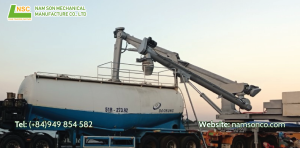
Conclusion
The Vietnam cement ship unloader is far more than just a piece of mechanical equipment – it is a strategic asset for the cement industry’s competitiveness.
Its advantages include:
- High efficiency and faster discharge rates.
- Cost-effectiveness and significant energy savings.
- Environmentally friendly and dust-free operation.
- Low maintenance with long-term durability.
Its practical applications extend across cement maritime transport, bulk cargo handling, cement jetty unloading, and seamless integration with storage systems.
By investing in the right cement ship unloader, Vietnamese ports and cement companies can enhance productivity, reduce costs, and meet the growing demands of both domestic and international markets.
In a competitive industry where time, cost, and quality matter, the Vietnam cement ship unloader stands out as a key driver of operational success.
=>SEE MORE: A beginner’s guide to cement ship unloading systems
Looking to upgrade your port’s cement handling capacity? Contact us today for expert advice and a customized Vietnam cement ship unloader solution that meets your operational needs.
CONTACT US
- Website: namsonco.com | mayhuthoi.com
- Alibaba: dthson.trustpass.alibaba.com
- Zalo/Whatsapp: (+84) 949854582
- Email: mailan@namsonco.com | thanhson@namsonco.com


